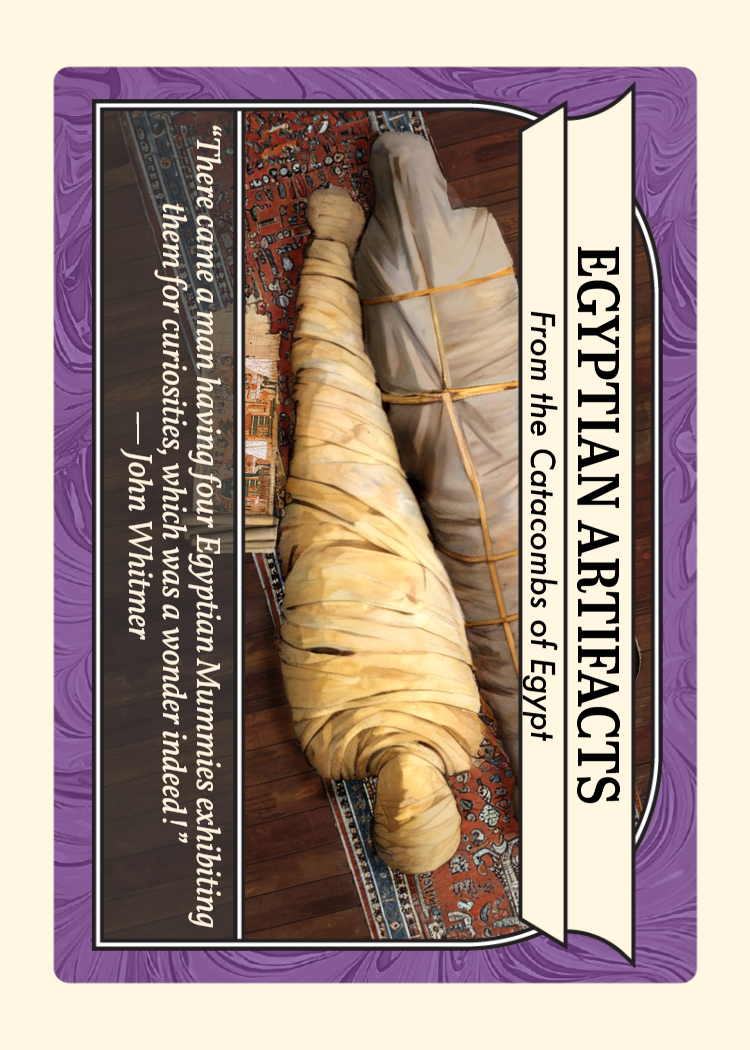'%3e%3cg%20transform='matrix(5.55556,0,0,5.55556,0,0)'%3e%3cg%20transform='matrix(1,0,0,1,929,75.5)'%3e%3cpath%20d='M0,0L62,0'%20style='fill:none;fill-rule:nonzero;stroke:rgb(51,51,51);stroke-width:1px;'/%3e%3c/g%3e%3c/g%3e%3cg%20transform='matrix(5.55556,0,0,5.55556,0,0)'%3e%3cg%20transform='matrix(1,0,0,1,975.694,63.8089)'%3e%3cpath%20d='M0,7.275C0.47,8.833%200.674,10.415%200.674,11.981L-11.783,11.981C-11.783,10.927%20-12.2,9.977%20-12.879,9.274L-12.95,9.295L-12.918,9.222C-13.613,8.526%20-14.565,8.088%20-15.617,8.069L-15.651,8.144L-15.683,8.067L-15.694,8.067C-16.75,8.067%20-17.7,8.484%20-18.403,9.159L-18.375,9.235L-18.448,9.203C-19.146,9.896%20-19.586,10.851%20-19.604,11.902L-19.528,11.936L-19.607,11.965L-19.607,11.981L-32.069,11.981C-32.069,10.245%20-31.807,8.534%20-31.277,6.906L-22.422,10.698C-22.232,9.706%20-21.824,8.793%20-21.259,8.004L-30.125,4.208C-28.585,1.345%20-26.193,-1.068%20-23.124,-2.627L-19.547,6.321C-18.744,5.777%20-17.815,5.395%20-16.816,5.23L-20.399,-3.713C-17.11,-4.706%20-13.711,-4.609%20-10.62,-3.605L-14.416,5.255C-13.42,5.445%20-12.509,5.848%20-11.719,6.417L-7.919,-2.451C-5.062,-0.911%20-2.647,1.483%20-1.089,4.548L-10.03,8.133C-9.485,8.931%20-9.112,9.864%20-8.949,10.858L0,7.275Z'%20style='fill:rgb(51,51,51);fill-rule:nonzero;'/%3e%3c/g%3e%3c/g%3e%3c/g%3e%3c/svg%3e)
'%3e%3cg%20transform='matrix(5.55556,0,0,5.55556,0,0)'%3e%3cg%20transform='matrix(1,0,0,1,929,75.5)'%3e%3cpath%20d='M0,0L62,0'%20style='fill:none;fill-rule:nonzero;stroke:rgb(51,51,51);stroke-width:1px;'/%3e%3c/g%3e%3c/g%3e%3cg%20transform='matrix(5.55556,0,0,5.55556,0,0)'%3e%3cg%20transform='matrix(1,0,0,1,975.694,63.8089)'%3e%3cpath%20d='M0,7.275C0.47,8.833%200.674,10.415%200.674,11.981L-11.783,11.981C-11.783,10.927%20-12.2,9.977%20-12.879,9.274L-12.95,9.295L-12.918,9.222C-13.613,8.526%20-14.565,8.088%20-15.617,8.069L-15.651,8.144L-15.683,8.067L-15.694,8.067C-16.75,8.067%20-17.7,8.484%20-18.403,9.159L-18.375,9.235L-18.448,9.203C-19.146,9.896%20-19.586,10.851%20-19.604,11.902L-19.528,11.936L-19.607,11.965L-19.607,11.981L-32.069,11.981C-32.069,10.245%20-31.807,8.534%20-31.277,6.906L-22.422,10.698C-22.232,9.706%20-21.824,8.793%20-21.259,8.004L-30.125,4.208C-28.585,1.345%20-26.193,-1.068%20-23.124,-2.627L-19.547,6.321C-18.744,5.777%20-17.815,5.395%20-16.816,5.23L-20.399,-3.713C-17.11,-4.706%20-13.711,-4.609%20-10.62,-3.605L-14.416,5.255C-13.42,5.445%20-12.509,5.848%20-11.719,6.417L-7.919,-2.451C-5.062,-0.911%20-2.647,1.483%20-1.089,4.548L-10.03,8.133C-9.485,8.931%20-9.112,9.864%20-8.949,10.858L0,7.275Z'%20style='fill:rgb(51,51,51);fill-rule:nonzero;'/%3e%3c/g%3e%3c/g%3e%3c/g%3e%3c/svg%3e)
"Soon after this, some of the Saints at Kirtland, purchased the Mummies and Papyrus (a description of which will appear hereafter) and I, with W[illiam] W. Phelps and O[liver] Cowdery, as scribes, commenced <Translation of some of the Characters.> the translation of some of the characters or hieroglyphics, and much to our joy found that one of the rolls contained the writings of Abraham; another the writings of Joseph of Egypt, &c, a more full account <of which> will appear in their place, as I proceed to examine or unfold them." — Joseph Smith1
In July 1835, Joseph Smith purchased Egyptian artifacts from a traveling antiquities showman named Michael Chandler, including papyrus scrolls and mummies. Joseph believed the papyri contained writings by the Old Testament patriarch Abraham.2 Through the translation process, he received revelations later published as the Book of Abraham. Joseph also established the School of the Prophets, where he focused on Hebrew studies with Hebraist Joshua Seixas.3
'%3e%3cg%20transform='matrix(5.55556,0,0,5.55556,0,0)'%3e%3cg%20transform='matrix(1,0,0,1,0,553.232)'%3e%3crect%20x='928.835'%20y='262.905'%20width='26.855'%20height='0.958'%20style='fill:rgb(51,51,51);'/%3e%3c/g%3e%3c/g%3e%3cg%20transform='matrix(5.55556,0,0,5.55556,0,0)'%3e%3cg%20transform='matrix(1,0,0,1,0,553.232)'%3e%3crect%20x='964.309'%20y='262.905'%20width='26.856'%20height='0.958'%20style='fill:rgb(51,51,51);'/%3e%3c/g%3e%3c/g%3e%3cg%20transform='matrix(5.55556,0,0,5.55556,0,0)'%3e%3cg%20transform='matrix(1,0,0,1,960,815.419)'%3e%3cpath%20d='M0,2.394C-1.75,2.394%20-2.952,1.614%20-3.639,1.198C-2.951,0.781%20-1.746,-0%200,-0C1.75,-0%202.951,0.78%203.639,1.197C2.951,1.613%201.745,2.394%200,2.394M4.733,0.941C4.647,0.876%202.585,-1.262%200,-1.262C-2.586,-1.262%20-4.648,0.876%20-4.734,0.941L-5.077,1.197L-4.734,1.453C-4.648,1.517%20-2.586,3.656%200,3.656C2.585,3.656%204.647,1.517%204.733,1.453L5.076,1.197L4.733,0.941Z'%20style='fill:rgb(51,51,51);fill-rule:nonzero;'/%3e%3c/g%3e%3c/g%3e%3cg%20transform='matrix(5.55556,0,0,5.55556,0,0)'%3e%3cg%20transform='matrix(1,0,0,1,1010.18,815.338)'%3e%3cpath%20d='M0,2.555C0.705,2.555%201.278,1.983%201.278,1.277C1.278,0.571%200.705,0%200,0C-0.706,0%20-6.388,1.277%20-6.388,1.277C-6.388,1.277%20-0.706,2.555%200,2.555M-6.642,1.492C-6.739,1.886%20-7.092,2.18%20-7.516,2.18C-8.014,2.18%20-8.418,1.775%20-8.418,1.277C-8.418,0.779%20-8.014,0.376%20-7.516,0.376C-7.092,0.376%20-6.739,0.669%20-6.642,1.063C-2.579,-0.725%20-4.133,-4.359%20-4.133,-4.359C-8.643,-0.865%20-17.21,1.277%20-31.753,1.277C-17.21,1.277%20-8.643,3.419%20-4.133,6.914C-4.133,6.914%20-2.579,3.279%20-6.642,1.492'%20style='fill:rgb(51,51,51);fill-rule:nonzero;'/%3e%3c/g%3e%3c/g%3e%3cg%20transform='matrix(5.55556,0,0,5.55556,0,0)'%3e%3cg%20transform='matrix(1,0,0,1,916.204,816.616)'%3e%3cpath%20d='M0,0C0,0%20-5.682,-1.278%20-6.388,-1.278C-7.094,-1.278%20-7.666,-0.706%20-7.666,0C-7.666,0.706%20-7.094,1.278%20-6.388,1.278C-5.682,1.278%200,0%200,0M-2.255,5.637C2.254,2.142%2010.823,0%2025.365,0C10.823,0%202.254,-2.142%20-2.255,-5.637C-2.255,-5.637%20-3.809,-2.002%200.254,-0.215C0.351,-0.609%200.704,-0.902%201.127,-0.902C1.625,-0.902%202.029,-0.498%202.029,0C2.029,0.498%201.625,0.902%201.127,0.902C0.704,0.902%200.351,0.609%200.254,0.215C-3.809,2.002%20-2.255,5.637%20-2.255,5.637'%20style='fill:rgb(51,51,51);fill-rule:nonzero;'/%3e%3c/g%3e%3c/g%3e%3c/g%3e%3c/svg%3e)
'%3e%3cg%20transform='matrix(5.55556,0,0,5.55556,0,0)'%3e%3cg%20transform='matrix(1,0,0,1,0,553.232)'%3e%3crect%20x='928.835'%20y='262.905'%20width='26.855'%20height='0.958'%20style='fill:rgb(51,51,51);'/%3e%3c/g%3e%3c/g%3e%3cg%20transform='matrix(5.55556,0,0,5.55556,0,0)'%3e%3cg%20transform='matrix(1,0,0,1,0,553.232)'%3e%3crect%20x='964.309'%20y='262.905'%20width='26.856'%20height='0.958'%20style='fill:rgb(51,51,51);'/%3e%3c/g%3e%3c/g%3e%3cg%20transform='matrix(5.55556,0,0,5.55556,0,0)'%3e%3cg%20transform='matrix(1,0,0,1,960,815.419)'%3e%3cpath%20d='M0,2.394C-1.75,2.394%20-2.952,1.614%20-3.639,1.198C-2.951,0.781%20-1.746,-0%200,-0C1.75,-0%202.951,0.78%203.639,1.197C2.951,1.613%201.745,2.394%200,2.394M4.733,0.941C4.647,0.876%202.585,-1.262%200,-1.262C-2.586,-1.262%20-4.648,0.876%20-4.734,0.941L-5.077,1.197L-4.734,1.453C-4.648,1.517%20-2.586,3.656%200,3.656C2.585,3.656%204.647,1.517%204.733,1.453L5.076,1.197L4.733,0.941Z'%20style='fill:rgb(51,51,51);fill-rule:nonzero;'/%3e%3c/g%3e%3c/g%3e%3cg%20transform='matrix(5.55556,0,0,5.55556,0,0)'%3e%3cg%20transform='matrix(1,0,0,1,1010.18,815.338)'%3e%3cpath%20d='M0,2.555C0.705,2.555%201.278,1.983%201.278,1.277C1.278,0.571%200.705,0%200,0C-0.706,0%20-6.388,1.277%20-6.388,1.277C-6.388,1.277%20-0.706,2.555%200,2.555M-6.642,1.492C-6.739,1.886%20-7.092,2.18%20-7.516,2.18C-8.014,2.18%20-8.418,1.775%20-8.418,1.277C-8.418,0.779%20-8.014,0.376%20-7.516,0.376C-7.092,0.376%20-6.739,0.669%20-6.642,1.063C-2.579,-0.725%20-4.133,-4.359%20-4.133,-4.359C-8.643,-0.865%20-17.21,1.277%20-31.753,1.277C-17.21,1.277%20-8.643,3.419%20-4.133,6.914C-4.133,6.914%20-2.579,3.279%20-6.642,1.492'%20style='fill:rgb(51,51,51);fill-rule:nonzero;'/%3e%3c/g%3e%3c/g%3e%3cg%20transform='matrix(5.55556,0,0,5.55556,0,0)'%3e%3cg%20transform='matrix(1,0,0,1,916.204,816.616)'%3e%3cpath%20d='M0,0C0,0%20-5.682,-1.278%20-6.388,-1.278C-7.094,-1.278%20-7.666,-0.706%20-7.666,0C-7.666,0.706%20-7.094,1.278%20-6.388,1.278C-5.682,1.278%200,0%200,0M-2.255,5.637C2.254,2.142%2010.823,0%2025.365,0C10.823,0%202.254,-2.142%20-2.255,-5.637C-2.255,-5.637%20-3.809,-2.002%200.254,-0.215C0.351,-0.609%200.704,-0.902%201.127,-0.902C1.625,-0.902%202.029,-0.498%202.029,0C2.029,0.498%201.625,0.902%201.127,0.902C0.704,0.902%200.351,0.609%200.254,0.215C-3.809,2.002%20-2.255,5.637%20-2.255,5.637'%20style='fill:rgb(51,51,51);fill-rule:nonzero;'/%3e%3c/g%3e%3c/g%3e%3c/g%3e%3c/svg%3e)
1. History, 1838–1856, volume B-1, josephsmithpapers.org
2. "Introduction to Egyptian Papyri, circa 300–100 BC," josephsmithpapers.org; "Chandler, Michael H.," josephsmithpapers.org; Saints, Volume 1, Chapter 20, 219-220; "Introduction to Book of Abraham Manuscripts, circa July–circa November 1835," josephsmithpapers.org; "Book of Abraham Facsimiles," mormonr.org
3. "Hebrew School," josephsmithpapers.org; "School of the Prophets," churchofjesuschrist.org; "Seixas, Joshua," josephsmithpapers.org








